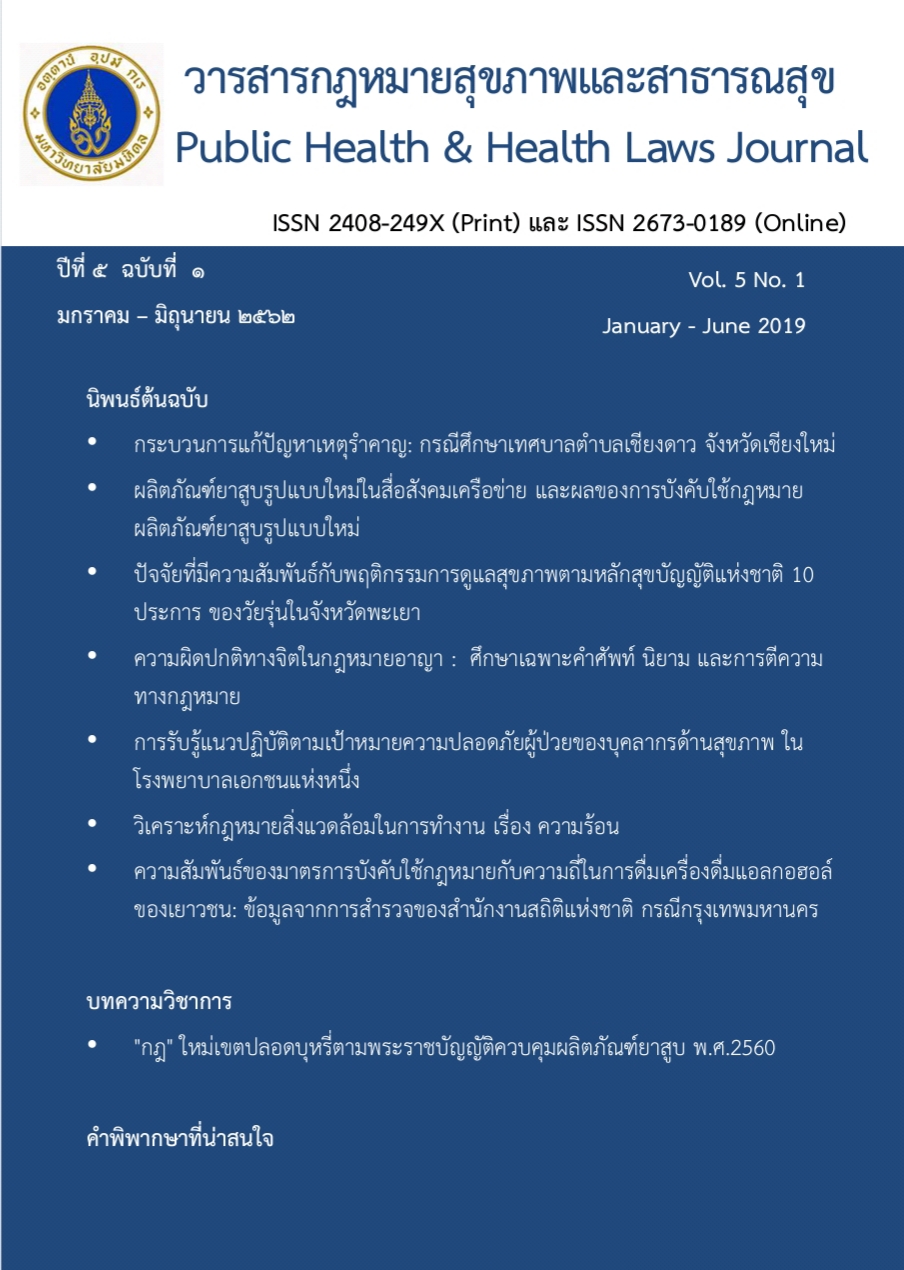New Tobacco Products on Social Media and Law Enforcement on New Tobacco Products Control
Keywords:
E-cigarette/law enforcement/social mediaAbstract
This study aimed to investigate the situation of new tobacco products in 7 areas; product, price, place, promotion, packaging strategy, selling strategy and communication strategy in social media channels. This research also studied law enforcement on new tobacco products control and new tobacco products consumption in youth groups.
This study used mixed methodology including field survey in 22 tobacco sale outlets in Bangkok and in Chiang Mai, Songkhla and Khon Kaen, surveyed 22 pubs near universities to investigate hookah service in pubs, analyzed data from 30 Fanpages selling new tobacco products and collected behavioural data from 2,100 young participants with self-administered questionnaire and group interview. Results showed e-cig received highest attention among young smokers, 30.2% of high-school and 43.8% of undergraduate students used e-cig, believing e-cig as safe and non-addictive. Rising popularity of e-cig came from easy access to consumption, both from online and physical selling distributions. All tobacco products were 30% cheaper than last year's price. Apart from online selling, new tobacco products are sold in 15 outlets in Bangkok, most of them are night markets. We found 14 methods of promotional strategies online and 16 methods of advertising.
Law enforcement control on new tobacco products showed failure in controlling sales in night markets and online channels. NCPO order was successful only in one place, Phra Phutta Yodfa Bridge whereas OCPB order was found successful in banning hookah service in pubs around university. This study suggested cooperative control from ICT and other government sectors.
References
นิทัศน์ ศิริโชติรัตน์. (2557).บุหรี่อิเล็กทรอนิกส์ Electronic cigarettes. ศูนย์วิจัยและจัดการความรู้เพื่อการควบคุมยาสูบ.
วรกิจ คาโดซาว่า.(2559).ควันจากน้ำ: ทัศนคติและการบริโภคเชิงสัญลักษณ์ของผู้บริโภคต่อบุหรี่ไฟฟ้า. การค้นคว้าอิสระ, มหาวิทยาลัยธรรมศาสตร์,
หทัย ชิตานนท์.(2555).การห้ามนำเข้าและจำหน่ายบุหรี่อิเล็กทรอนิกส์ (Electronic cigarettes). ชุดเอกสารวิชาการ, สถาบันส่งเสริมสุขภาพไทย.
Allem , Ferrara , Uppu , Cruz , Unger. (2017). E-cigarette surveillance with social media data: social bots, emerging topics, and trends. JMIR Public Health Surveillance,3(4).
Cole-Lewis , Pugatch , Sanders , Varghese , Posada , Yun , Schwarz , Augustson. (2015). Social Listening: A content analysis of E-cigarette discussions on Twitter. Journal of Medical Internet Research, 17(10).
Dube , Pathak, Nyman, Eriksen. (2015).Electronic cigarette and electronic hookah: a pilot study comparing two vaping products. Preventive Medicine Reports, 2:953–958.
Lee , Hart , Sears , Walker , Siu , Smith. (2017). A picture is worth a thousand words: Electronic cigarette content on Instagram and Pinterest. Tobacco Prevention & Cessation,3:119.
Link, Cawkwell, Shelley, Sherman. (2015). An exploration of online behaviors and social media use among hookah and electronic-cigarette users. Addictive Behaviors Reports,37–40.
Pepper, Brewer. (2014). Electronic nicotine delivery system (electronic cigarette) awareness, use, reactions and beliefs: A systematic review. Tobacco Control, 23:375–384.
Zhou , Zhang , Zeng , Tsui. (2018). Influence of flavors on the propagation of E-Cigarette-related information: social media study.JMIR Public Health Surveillance,4(1):e27.
Downloads
Published
How to Cite
Issue
Section
License
Disclaimer and Copyright Notice
The content and information presented in articles published in the Journal of Law and Public Health Policy represent the opinions and sole responsibility of the respective authors. The editorial board does not necessarily agree with or assume any responsibility for the views expressed.
All articles, data, content, images, and other materials published in the Journal of Law and Public Health Policy are the intellectual property of the journal. Any individual or organization wishing to reproduce, distribute, or otherwise use the entirety or any part of such materials must provide proper citation.





